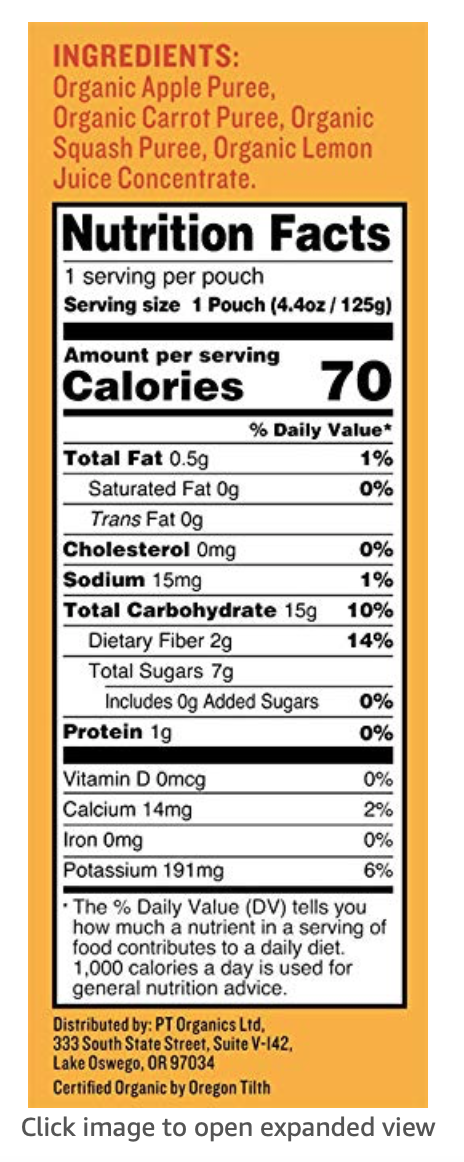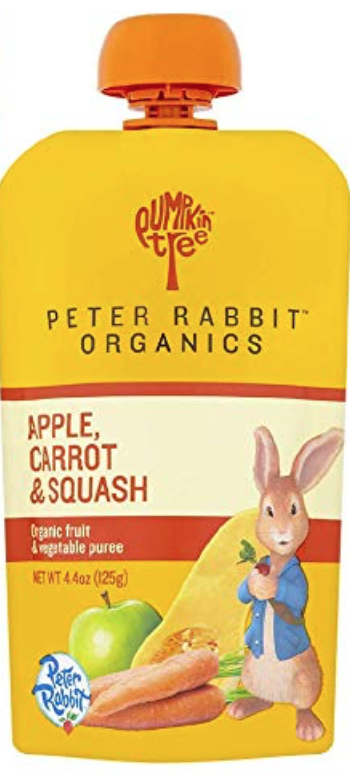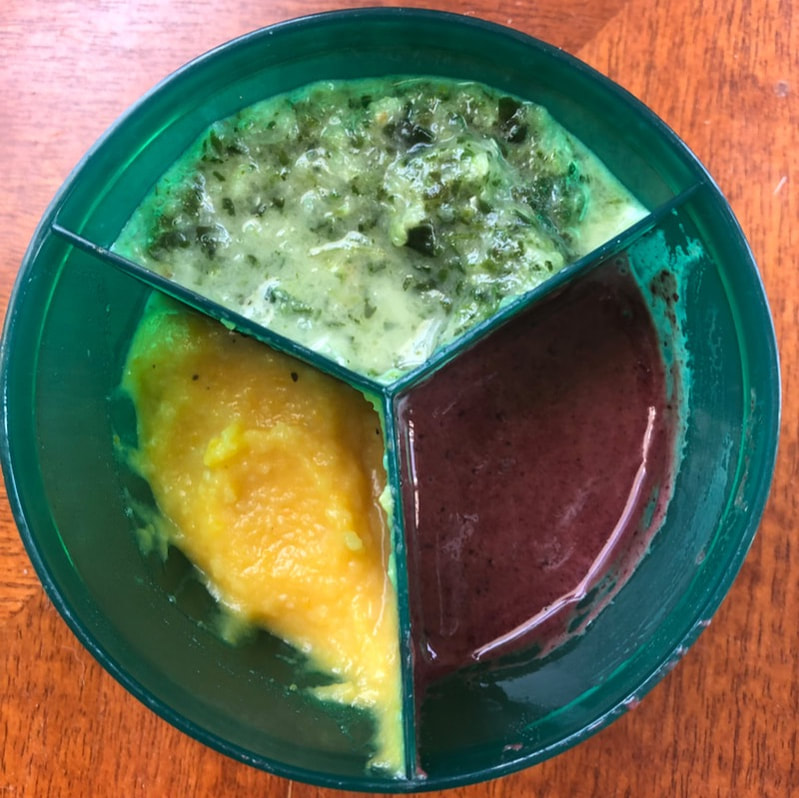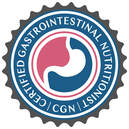Critical WindowThe first 1000 days (~2 years) of baby's life is a critical window to ensure proper neurodevelopment and epigenetics. Epigenetics, the modification of gene expression, is influenced by the baby's diet (as well as mother's diet during pregnancy and breastfeeding), lifestyle, and environment. Nutrient deficiencies and/or poor quality food choices may cause some genes to turn off and on in unfavorable ways, increasing the risk for disease as the baby ages (1). Furthermore, during the first 4 years, but especially during the first few months and up to a year, baby starts to develop its' own unique microbiome. The microbiome of infants is influenced by the type of birth, feeding practices (such as breastfeeding vs formula feeding), antibiotic usage by mom or baby, and type of complimentary foods introduced. By the time baby reaches 3-5 years of age, the microbiome resembles that of an adult. Although the microbiome is still more adaptable to dietary changes up until the teen years, this initial period of time sets the stage for both health and disease moving forward (2). Having a basic understanding of infant nutrition becomes essential when you start to introduce complimentary food around 6 months of age. After reading this article, I hope you will understand why making homemade baby food provides your baby with the most nutrient dense and affordable options. But first, in order to understand where my recommendations are coming from, we have to understand the average composition of breastmilk. Fat provides the majority of energy in breastmilk, providing about 50% calories. Approximately 40% of the energy in breastmilk is derived from carbohydrates, and the remaining 10% from protein. Furthermore, energy from fat in breastmilk continues to increase as babies get older. Research found that breastmilk from moms who had breastfed for > 1 year had a greater fat percentage than those that breastfed only 2-6 months (3). The NumbersBetween the age of 6-12 months babies needs on average 80kcal/kg per day with at least 13g protein and at least 30g of fat per day. Generally, after about 6 months of age, the total volume of breast milk consumed by the infant becomes insufficient to meet the baby’s daily needs for energy, protein, iron, zinc, and fat soluble vitamins (4). Now look at the popular commercial baby food nutrition labels below. How is your baby going to get at least 30g of fat and 13g of protein by eating only these? The first three products make it very difficult to make a dent in either the fat or the protein recommendations. Granted babies are still drinking breast milk or formula as complimentary foods are introduced, but that doesn't mean the complimentary foods should consistently lack essential macronutrients and micronutrients. If we look at most of the choices available in grocery stores, they contain very little to no fat and protein. Although whole food based fruit/starch baby purees are not “unhealthy”, they are just lacking BALANCE, and therefore lacking some very critical nutrients that are found in protein and fat rich foods. The fourth, Serenity Kids, is the best option, but it is very expensive costing $4 per pouch (compared to $1.50-$2 for the other ones) and is only available online. Serenity Kids baby pouches are great for on-the-go or last minute options, but are not affordable if used for the majority of baby food provided. Babies Need FatFat and protein are essential macronutrients. Fat is essential to help absorb fat soluble vitamins A, E, D, and K. Foods rich in quality fat like fatty fish, egg yolks, avocados, nut butters, grass-fed butter and heavy cream, olives, and extra virgin olive oil are naturally excellent sources of one or more fat soluble vitamins. Fat soluble vitamins play a big role in growth and development, they support a healthy immune system, and reduce inflammation. Without adequate fat, we cannot digest and absorb these critical nutrients. Interestingly, mature human milk is comprised of mostly saturated (~40%) and monounsaturated (~35%) fats. Omega-6 (12-26%) and Omega-3 (0.8-3.6%) fatty acid content varies greatly depending on the mothers diet (5). Due to the high amount of fat in breast milk infants rely more heavily on both salivary and gastric lipase (enzymes that breaks down fat for absorption) compared to adults because pancreatic lipase doesn't reach maturity until 1 year of age. These enzymes preferentially break down short and medium chain fatty acids, which are abundant in milk fat and coconut oil (6,7). These enzymes allow infants to break down fatty acids found in breast milk for easier absorption. Fats in the adult diet that are rich in short and medium chain fatty acids are grass-fed butter and cream (butyric acid - short chain) and coconut milk (lauric acid - medium chain). Longer chain fats like mono and polyunsaturated fatty acids from avocados, nuts & seeds, and fish, require more complex digestion in the small intestine including pancreatic lipase and bile for absorption. Not surprisingly, research has also found that the dietary fat content of breastmilk fluctuates based on mom's dietary fat intake. If mom eats a low fat diet, her breastmilk will have a lower percentage of fat in the milk, and also a lower percentage of fat soluble vitamins. Therefore, fat intake and fat quality is VERY important for both mom and baby (8,9,10). Plus, fats increase satiety by slowing down the rate at which food empties from the stomach! This can be especially helpful to support better sleep and nap patterns. Share your baby food posts with me! Tag @happybellynutrition in your Instagram photos or use the hashtag #babiesneedfat Protein Rich Foods for Essential Trace MineralsAdequate protein is essential because the demand is high for tissue replacement, development of lean body mass, and growth. Infants require more protein per kilogram of body weight than do adults (1.2g/kg vs. 0.8g/kg). Furthermore, protein rich foods are excellent sources of iron and zinc, two nutrients that become important as complimentary foods start to replace breastmilk. Animal sources of protein like grass-fed beef, liver, and egg yolks, etc. contain more bioavailable sources of iron and zinc than do plant based alternatives such as beans/legumes and dark leafy greens. Pairing plant based iron sources with vitamin C rich fruit and vegetables aids in absorption. Infants between 7-12 months of age require 11mg/day of iron and 3mg/day of zinc (4). Iron Rich Animal Foods (with easily absorbed heme iron) Chicken Liver, Beef Liver, Beef/Lamb, Dark Turkey/Chicken Meat, Eggs, Sardines, Salmon, Skipjack Light Tuna Iron Rich Plant Foods (with non-heme iron) Extra firm tofu, beans, lentils, peas, spinach Pair Non-Heme Foods with Vitamin C Rich Foods Strawberries, Kiwi, Cantaloupe, Citrus, Papaya, Pineapple, Bell Peppers, and Broccoli Research suggests that healthy full term babies have adequate iron and zinc stores that last them for at least the first 6 months. Therefore the American Academy of Pediatrics Committee on Nutrition recommends that breast-fed infants receive 1mg/kg/day of iron by 6 months, preferably from iron rich complimentary foods. Interestingly, recent research found that when compared to infants who received iron-fortified cereals vs iron and zinc rich pureed beef, the babies that consumed the beef had an increase in head circumference and had a trend towards a higher behavior index at 12 months (11). See my Baby Liver Pate recipe for a rich source of iron, zinc, and many more critical nutrients! Black Beans (1oz) vs Grass-fed Ground Beef (1oz) Beans: 40kcal, Protein 2.3g, Fat 0.2g, Iron 0.7mg, Zinc 0.3mg Beef: 56kcal, Protein 5.5g, Fat 3.6g, Iron 0.6mg, Zinc 1.3mg Eat the Rainbow For Phytonutrients & PrebioticsAnother important reason to make homemade baby food purees is the ability to increase the variety of foods used in the purees. Increasing variety increases both the nutrients and phytonutrients in the baby's diet. Nutrients are vitamins and minerals, while phytonutrients are plant compounds that provide a wide array of health benefits including reducing inflammation. Most interestingly, phytonutrients act as prebiotics, the food for good gut bacteria, and can modulate the gut microbiome in favorable ways. Did you know that by age 3, the gut microbiome becomes an adult like ecosystem? The adult microbiome is very resilient and difficult to change. Only 30-40% of the microbiome can be influenced by long-term dietary and lifestyle interventions (12). This is very important as the gut microbiome place a huge role in the development of health and disease. One can increase the phytonutrient density of the diet by simply increasing the variety of plant foods consumed including fruit, vegetables, beans/legumes, nuts/seeds, herbs/spices, etc. Each plant food provides its' own unique array of phytonutrient compounds. Most baby food is limited to certain standard ingredients including bananas, apples, sweet potatoes, and carrots. They are also commonly peeled, even if they do not need to be peeled such as apples, potatoes, and carrots. Keep in mind, the peels of fruit and veggies contain the majority of the phytonutrients. So if you don't need to peel it, then don't. Just make sure its organic! Other foods that are rich in prebiotics that are often not included in baby food purees include garlic, leeks, and onions. Not only are they great for gut health, but they add a lot of flavor. The more flavor babies are exposed to through their diet and mother's breastmilk, the less likely they will be picky eaters later on, and more likely to have a varied diet rich in phytonutrients and prebiotics. Heavy Metal Contamination in Commercial Baby FoodFinally, another reason to make homemade baby food is heavy metal contamination. A recent study from Healthy Babies Bright Future, has highlighted the problem with the contamination of heavy metals in commercial baby foods. The organization looked at 168 products over 61 brands, and measured the amount of arsenic, mercury, cadmium, and lead found in the samples. They found at least one heavy metal in 95% of the products tested. Rice based foods, especially cereals where at the top of the list, with highest levels of arsenic. Fruit juice, carrots, and sweet potatoes were also found to have a higher risk for heavy metal exposure (13). If you are curious to see if your baby food products are high in heavy metal check out this website. The less stars, the more heavy metals are in the product. The HOWWhen we combine all the data highlighting the needs for 50% of the calories to come from fat, increased need for fat soluble vitamins, as well as iron and zinc, and the importance of adequate protein, then the simple fruit and veggie blends just do not meet the infant’s needs. Plus, commercial baby foods, especially rice based products, could be a source of heavy metals in your baby’s diet. Therefore, making simple BALANCED baby purees rich in a variety of plant foods at home is the best choice for your baby. Offering two to three different purees at each meal ensures adequate variety and nutrient density. Making baby food at home doesn't need to be complicated. Simply steam or bake a veggie that you have at home and mix it with a protein and/or fat item. Use a little bit and mash it up as needed or prepare a whole batch with a food processor and freeze into individual servings. The VERY SIMPLE combinations below only require a fork for mashing…no processor needed. Depending on your baby you may need to adjust the texture, adding more liquid for a smoother texture. As the baby gets older and swallow/chew function improves, you can increase the texture, leaving more chunks. Share your baby food posts with me! Tag @happybellynutrition in your Instagram photos or use the hashtag #babiesneedfat Baby FORK MASHABLES Zesty Avocado Chickpea (makes 4 servings) INGREDIENTS 1/3 cup canned chickpeas (rinsed) + ½ avocado + squeeze lemon/lime juice + pinch salt/pepper DIRECTIONS: Place rinsed and drained chickpeas in a bowl and heat in microwave for 30 seconds. Mash with a fork until desired texture. Stir in a small squeeze lemon/lime juice and a pinch salt and pepper. Add the avocado and mash together until desired texture. Garlicky Cauliflower Yolk (makes 4 servings) INGREDIENTS 1/3 steamed medium cauliflower (florets only) + 1 steamed garlic clove + 1 egg yolk + 2 teaspoons grass fed butter + pinch salt/pepper + sprinkle dulse granules DIRECTIONS: Steam cauliflower head in steamer basket along with garlic clove, ~ 20 minutes. Meanwhile medium boil and egg for ~ 8 minutes. Rinse under cold water. Peel and remove white and keep the yolk. Once the cauliflower is fork tender remove 1/3 of the cauliflower (florets only) and place into a bowl along with egg yolk and steamed garlic clove. Mash until desired texture. Season with pinch salt, pepper, and sprinkle dulse granules. Spiced Banana Chia (makes 4 servings) INGREDIENTS 1 medium banana + ¼ cup whole milk yogurt + 1 teaspoon chia seeds + ¼ teaspoon cinnamon DIRECTIONS: Mash the banana to desired texture. Stir in the yogurt, chia seeds, and cinnamon until combined. Allow to sit at least 1 hour to allow chia seeds to plump up. Sweet Potato & Chèvre (makse 4 servings) INGREDIENTS 1 small steamed and cooled sweet potato/yam + 1oz plain chèvre (fresh goat cheese) + salt and pepper + 2 teaspoons extra virgin olive oil DIRECTIONS: Remove the peel from the sweet potato and place into a bowl/glass food storage container. Top with chèvre and sprinkle salt and pepper. Microwave for 90 seconds or until the sweet potato and chèvre are warm. Drizzle with olive oil and mash with fork. You can also make puree blends (adjust texture per baby’s development) to increase the variety of flavors and spices baby gets exposed to. Babies love flavor just like adults! Keep in mind that it may take 10-15 tries before baby likes a new food item. Allow them to explore a new flavor or texture multiple times before giving up on the food itself. Some babies even like the food served cold or room temperature. See some of my recipes below for inspiration! They have all been approved by baby Toren :) Berry Prune FRUIT BLEND Banana Strawberry Cream FRUIT BLEND Thai Carrot VEGGIE BLEND Apple Butternut VEGGIE BLEND Potato & Fennel with Greens VEGGIE BLEND Baby Liver Pate PROTEIN BLEND Final ThoughtsAlthough initially it can be overwhelming to make your own baby food (amongst everything else you have to do as a parent), it is good to know HOW & WHY. Not only is it the more budget friendly choice, but it can be the more nutrient dense choice if done right. During the first 2 years of life (and beyond), it is so important to provide high quality, nutrient dense food options, that do not omit certain critical nutrients. Although fruits and vegetables are essential to health, don't forget to add some quality FAT and provide some quality PROTEIN. There are many other nutrients of concern regarding infant and early toddler nutrition not highlighted in this general overview. Consider working with your dietitian for more personalized recommendations, especially if food allergies or food intolerances are an issue. Share your baby food posts with me! Tag @happybellynutrition in your Instagram photos or use the hashtag #babiesneedfat References:
1. Lockett GA, Patil VK, Soto-Ramírez N, Ziyab AH, Holloway JW, Karmaus W. Epigenomics and allergic disease. Epigenomics. 2013;5(6):685–699. 2. Rodríguez JM, Murphy K, Stanton C, et al. The composition of the gut microbiota throughout life, with an emphasis on early life. Microb Ecol Health Dis. 2015;26:26050. Published 2015 Feb 2. 3. Mandel D, Lubetzky R, Dollberg S, et al. Fat and energy contents of expressed human breast milk in prolonged lactation. Pediatrics. 2005 Sep;116(3):e432-5. 4. Up-To-Date: Introducing solid foods and vitamin and mineral supplementation during infancy. www.uptodate.com. Accessed October 2019. 5. Delplanque B, Gibson R, Koletzko B, Lapillonne A, Strandvik B. Lipid Quality in Infant Nutrition: Current Knowledge and Future Opportunities. J Pediatr Gastroenterol Nutr. 2015;61(1):8–17. 6. Advanced Nutrition and Human Metabolism. 6thEdition. SS Gropper, JL Smith. 2013. 7. Manson WG, Weaver LT. Fat digestion in the neonate. Archives of Disease in Childhood - Fetal and Neonatal Edition 1997;76:F206-F211 8. Up-To-Date: Nutritional composition of human milk for full term infants.www.uptodate.com. Accessed October 2019. 9. Nestle Nutrition Institute; Fat content in Breast Milk and Maternal Diet are Highly Correlated. 10. WHN Academy: Nichols, L. Nutrition for Breastfeeding Effects of Maternal Intake of Nutrient Content of Breast Milk. April 2019 11. Meat as a first complementary food for breastfed infants: feasibility and impact on zinc intake and status.Krebs NF, Westcott JE, Butler N, Robinson C, Bell M, Hambidge KM.J Pediatr Gastroenterol Nutr. 2006;42(2):207. 12. Kashtanova DA, Popenko AS, Tkacheva ON, et al. Association between the gut microbiota and diet: Fetal life, early childhood, and further life. Nutrition. 2016 Jun;32(6):620-7. 13. Most Baby Foods Contain Arsenic, Lead, and Other Heavy Metals, Study Finds. https://www.consumerreports.org/food-safety/most-baby-foods-contain-arsenic-lead-and-other-heavy-metals/. Accessed November 2019.
1 Comment
5/17/2021 11:50:12 pm
It really helped when you said that poor quality food choices can increase the risk for illnesses as a baby ages. My sister is 10 weeks pregnant and has no idea on how she will take care of the baby. I guess I should tell her to enroll in a Prenatal University, so she can understand infant nutrition and be familiar with the feeding practices for a healthy baby.
Reply
Leave a Reply. |
AuthorLike to read? Then get your evidence based nutrition information here! All posts written by Selva Wohlgemuth, MS, RDN Functional Nutritionist & Clinical Dietitian Archives
August 2023
Categories
All
|
















 RSS Feed
RSS Feed


